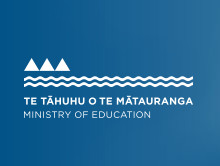I Muri i te Pānui Pukapuka
After Reading
Ka taea te whakamahi ēnei ngohe hei aromatawai, hei whakawhānui hoki i ngā pūkenga o ngā ākonga.
Possible assement and extension activities.
- Ākina ngā ākonga ki te matapaki i ngā pātai nei:
- He aha ngā akoranga matua ka mau i a tātou mai i tēnei pukapuka?
- He aha ngā pātai i tuhia e koe i mua i tō pānui i te pukapuka nei? Kua whakautua ō pātai?
Ki te kore, rapua he whakautu mā tētahi atu huarahi, arā, te whare pukapuka, te Ipurangi, ō whanaunga rānei.
- Get students to discuss the following questions:
- What are the main ideas we have learnt from reading this book?
- What were the questions you wrote before you read the book? Have your questions been answered?
If not, try and find some answers in another way, try the library, the Internet, or perhaps ask family.
- Me tautohu ngā tauira o te reo whakaahua i roto i te pukapuka, ka whakamārama atu ki ngā ākonga ka pēhea tēnei reo e āwhina ai i te kaipānui ki te whai atu i te whakaaro o te kaituhi. Hei tāpiri atu, me whakamārama atu mā te whakamahi i te maha atu o ngā momo tauira o te reo whakaahua ka pārekareka te kōrero.
Identify the descriptive text in the book and talk to the students about how it helps the reader to identify with the feelings of the writer. You could also talk about how the use of descriptive language makes writing sound more interesting.
He hokinga whakamuri hei kōkiringa whakamua
Ideas for reflecting in learning and planning next learning steps
- Kia rangahau ngā ākonga i ētahi ōritenga, i ētahi rerekētanga hoki i waenganui i te oranga o ngā tāngata i te wā o te Pakanga Tuarua o te Ao me te oranga o te ākonga ināianei. Kia whakaaro rātou ki ngā mea pēnei i ngā āhuatanga e hāngai ana ki te kai, ki te haere ki tāwāhi, ki te momo hangarau, te aha atu rānei.
Encourage students to research other similarities and differences between how people lived during World War Two and how students live now. They could look at things such as food, travel, technology, and so on.
- Kia uiui ia tamaiti i tōna koro, i tōna kuia rānei mō ngā āhuatanga o ia rā i a ia e tamaiti ana.
Kātahi ka whakaatu i āna pārongo mā te whaikōrero, mā te whakaaturanga PowerPoint rānei.
Get students to interview either their koro or kuia about what daily life was like for them as children. Then they present their information either as a speech or a PowerPoint presentation.




